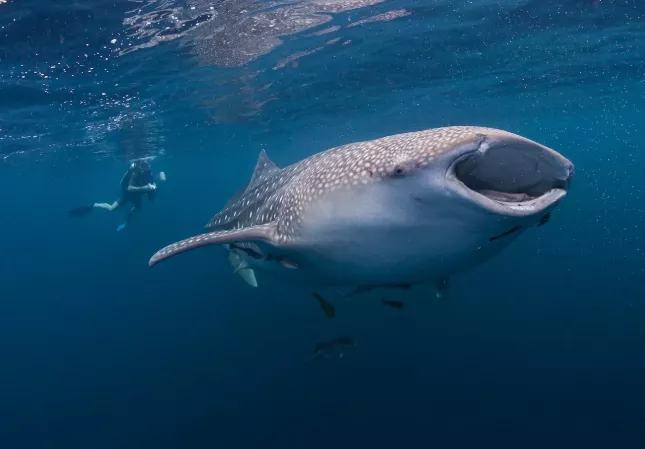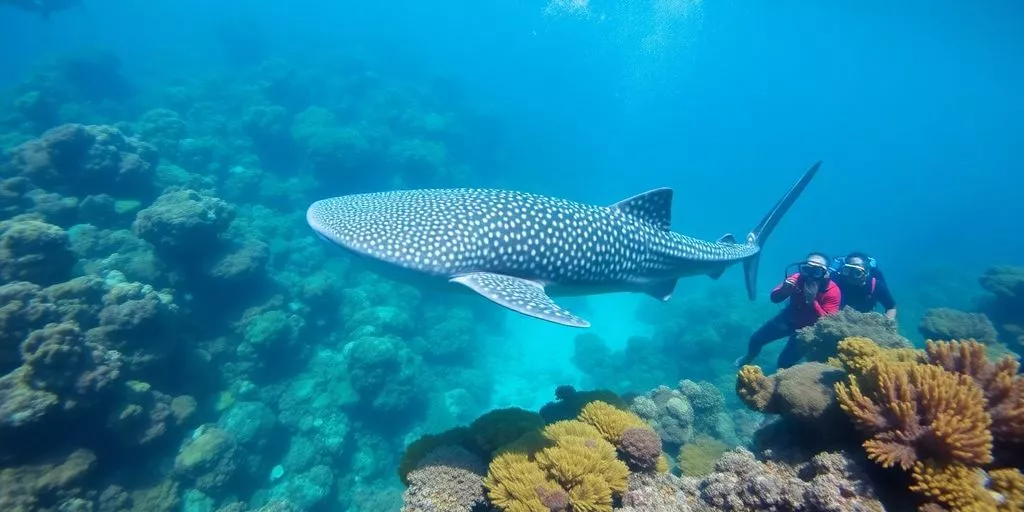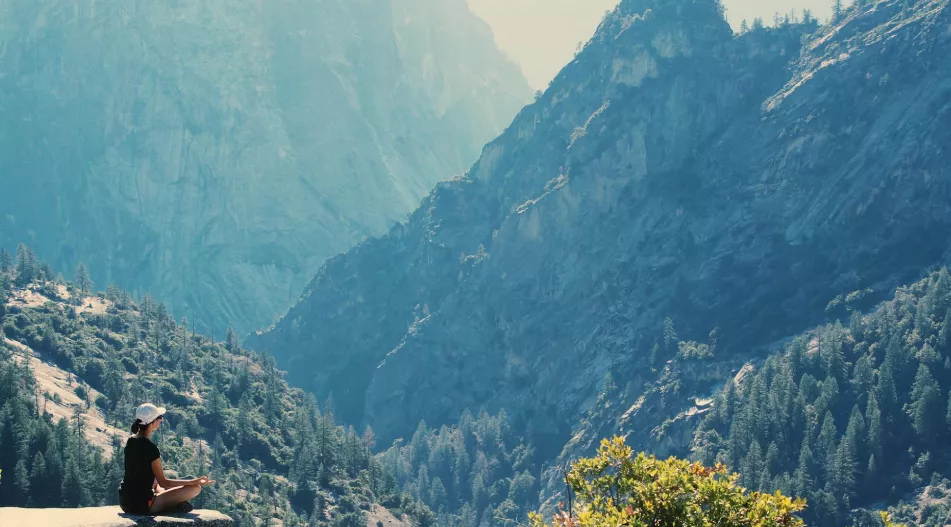If you’re looking for an unforgettable adventure, Oslob Whale Shark Watching should be at the top of your list for 2025. This small town in the Philippines is famous for its encounters with the ocean’s gentle giants. Imagine swimming alongside these massive creatures in their natural habitat, all while learning about their importance to the marine ecosystem. In this guide, we’ll cover everything you need to know to make the most of your whale shark experience in Oslob, from planning your trip to ensuring a safe and respectful encounter.
Key Takeaways
- Oslob is a prime location for whale shark watching, attracting visitors from all over the globe.
- Conservation and ethical tourism are vital to protecting whale sharks and their environment.
- The best times to visit for whale shark watching are from late January to March and during the dry season from June to August.
- Always respect the whale sharks by keeping a safe distance and avoiding touching them.
- Combine your whale shark adventure with other activities like canyoneering or cultural experiences in Oslob.
Understanding Oslob Whale Shark Watching
Oslob, Cebu, has become world-famous for its whale shark watching experience. But before you jump in the water, it’s important to understand the bigger picture. It’s not just about getting a cool photo; it’s about doing it responsibly. Let’s get into the details.
The Importance of Conservation
Although they are incredible animals, whale sharks are also susceptible. Things like habitat destruction, boat traffic, and fishing pose a threat to their populations. Observing whale sharks in Oslob has raised awareness of these gentle giants, but it also carries a responsibility to protect them. To ensure that these animals survive for future generations, conservation efforts are essential. Ensuring their long-term survival is more important than merely enjoying them now.
Ethical Tourism Practices
Okay, so you want to see the whale sharks. Great! But how do you do it ethically? Here are a few things to keep in mind:
- Choose reputable tour operators: Look for companies that follow guidelines and prioritize the well-being of the sharks.
- Don’t touch the sharks: Seriously, keep your hands to yourself. Their skin is sensitive, and touching them can disrupt their natural behavior.
- Use reef-safe sunscreen: Regular sunscreen can harm the marine environment. Oslob Whale Sharks are sensitive to chemicals, so choose a reef-safe option.
- Listen to the guides: They’re there to help you have a safe and responsible experience.
Ethical tourism is about minimizing your impact and maximizing the benefits to the local community and the environment. It’s about being a responsible traveler and respecting the animals and their habitat.
Local Regulations and Guidelines
Oslob has specific rules in place to protect the whale sharks and manage tourism. These regulations are there for a reason, so it’s important to follow them. Here’s a quick rundown:
- Designated viewing areas: You can only swim with the sharks in specific areas.
- Time limits: Encounters are usually limited to 30 minutes to minimize stress on the animals.
- No feeding without authorization: Only designated individuals are allowed to feed the sharks, and they do so in a controlled manner.
- Briefing sessions: All visitors are required to attend a briefing session before swimming with the sharks. This is where you’ll learn about the rules and guidelines. Make sure you pay attention!
Planning Your Oslob Whale Shark Adventure
So, you’re thinking about swimming with whale sharks in Oslob? Awesome! It’s an experience you won’t forget. But before you jump on a plane, let’s talk about planning your trip so it’s smooth and amazing. I’ll walk you through the best time to go, what to pack, and how to pick the right tour. Trust me, a little planning goes a long way.
Best Time to Visit
Okay, so when should you actually go? The sweet spot is usually late January to March. The sea is calmer then, which makes for better visibility and a more enjoyable experience. The dry season, from June to August, is another good option, but keep an eye on the weather. Things can change, and you don’t want to end up stuck inside during your whole trip. Checking local updates before you go is always a smart move. You can also check the Oslob travel guide for updated information.
What to Bring for the Experience
Packing the right stuff can make or break your trip. Here’s a quick list:
- Reef-safe sunscreen: This is a must! Regular sunscreen can harm the whale sharks and the marine ecosystem.
- Swimwear and a towel: Obvious, but don’t forget them!
- A change of clothes: You’ll want something dry to change into after your swim.
- Comfortable footwear: You might be doing some walking.
- Waterproof camera: To capture those amazing underwater moments. A GoPro is perfect.
Don’t forget that you can rent cameras if you don’t have one. There are places that offer rentals specifically for underwater photography, so you can get some great shots without buying expensive gear.
Choosing the Right Tour Package
There are tons of tour packages out there, so how do you pick the right one? Here are a few things to consider:
- What’s included: Does it include snorkeling gear, safety equipment, and a guide? Make sure you know what you’re getting.
- Group size: Smaller groups often mean a more personal experience.
- Reviews: Check what other people are saying about the tour company. Are they reliable and responsible?
Some tours combine the whale shark watching with other activities, like Badian canyoneering. If you’re up for an adventure, that could be a great option! Here’s a quick comparison of tour options:
| Tour Package | Activities Included | Price (approx.) | Group Size | Notes |
|---|---|---|---|---|
| Basic Whale Shark | Whale shark watching, snorkeling gear | $30-$40 | Large | Good for budget travelers |
| Whale Shark + Tumalog | Whale shark watching, Tumalog Falls visit, lunch | $50-$60 | Medium | Popular choice, includes a beautiful waterfall |
| Full-Day Adventure | Whale shark watching, canyoneering, Kawasan Falls, lunch | $80-$100 | Small | Best for those who want a full day of adventure and are physically fit |
Safety Measures During Whale Shark Encounters
Essential Safety Gear
When you’re getting ready to swim with whale sharks, having the right gear is super important. It’s not just about comfort; it’s about keeping yourself safe and respecting the animals. Here’s a quick rundown:
- Snorkel and Mask: Make sure these fit well. A leaky mask can ruin the whole experience. Practice using them before you go out.
- Life Vest/Buoyancy Aid: These are often required, and for good reason. Even if you’re a strong swimmer, it helps you stay afloat and keeps you visible.
- Proper Swimwear: Wear something comfortable that won’t restrict your movement. Rash guards are a good idea to protect your skin from the sun.
Remember, the goal is to observe these amazing creatures without causing them any stress. Being prepared with the right gear helps you do that.
Guidelines for Snorkeling
Snorkeling with whale sharks is an amazing experience, but it’s important to follow the rules to protect both yourself and the animals. Here are some guidelines:
- Maintain Distance: Always keep a safe distance from the whale sharks. The recommended distance is usually at least 4 meters from the body and 6 meters from the tail. This prevents you from accidentally touching or disturbing them.
- No Touching: This is a big one. Never, ever touch a whale sharks. Their skin has a protective layer, and human contact can harm them.
- Stay Calm: Avoid sudden movements or loud noises that might scare the whale sharks. Move slowly and deliberately in the water.
Respecting the Whale Sharks
Showing respect for whale sharks is key to responsible tourism. It’s not just about following the rules; it’s about understanding the impact of your actions. Here’s how you can show respect:
- No Flash Photography: The bright light can startle and disorient the whale sharks. Just turn off the flash on your camera or phone.
- Reef-Safe Sunscreen: Regular sunscreen can harm the marine environment. Use sunscreen that’s specifically labeled as reef-safe.
- Listen to the Guides: The local guides know best. They’re familiar with the whale sharks and the local regulations. Pay attention to their instructions and follow their advice.
By following these guidelines, you can help ensure that whale shark watching remains a sustainable and enjoyable activity for everyone.
Exploring Additional Activities in Oslob

Oslob isn’t just about the whale sharks, though they are a major draw. There’s a bunch of other cool stuff to do around here, so don’t just book your whale shark watching and leave! Make a day (or two!) of it.
Badian Canyoneering
Okay, so it’s not technically in Oslob, but Badian is close enough, and canyoneering there is a must-do. Imagine rappelling down waterfalls, jumping into crystal-clear pools, and swimming through narrow canyons. It’s an adrenaline rush, for sure, but also super beautiful. Most tours include:
- Round-trip transportation from Oslob.
- All the necessary safety gear (helmet, life vest).
- A local guide who knows the canyon like the back of their hand.
- Lunch to refuel after all that adventuring.
Island Hopping Tours
Want to see more of what Cebu has to offer? Island hopping is the way to go. Sumilon Island is a popular choice, known for its sandbar and clear waters. You can usually find tours that include:
- A boat trip to and from the island.
- Snorkeling gear so you can check out the marine life.
- Time to relax on the beach and soak up the sun.
- Sometimes, lunch is included, so be sure to ask!
Cultural Experiences in Oslob
Oslob has more than just natural beauty; it’s got some history too! Check out the Our Lady of the Immaculate Conception Church, a beautiful old church with a lot of stories. Or, wander around the town and chat with locals – you might be surprised what you discover.
Taking some time to explore the local culture is a great way to give back to the community. Consider buying souvenirs from local vendors or eating at family-run restaurants. It’s a small thing that can make a big difference.
Capturing Memories of Your Oslob Experience
Photography Tips for Underwater Shots
You’re going to swim with whale sharks, which is fantastic! I assume you’ll want to take some pictures. Make sure your camera is waterproof first! I know it’s obvious, but you’d be shocked. The ideal action camera is a GoPro or comparable model. Invest in a red filter to enhance the colors that are obscured by water. To avoid frightening the whale sharks, try to approach them, but not too closely. Mornings are usually the best because natural light is your friend. Additionally, remember to look at the whale sharks rather than merely gazing at your screen the entire time!
Recommended Gear for Capturing Moments
Alright, let’s talk gear. You don’t need a ton of fancy stuff, but a few things will make your life easier:
- Waterproof camera: A GoPro or similar action camera is ideal.
- Red filter: Helps correct colors underwater.
- Extra batteries: You don’t want to run out of juice mid-swim!
- Floating hand grip: Keeps your camera from sinking if you lose your grip.
- Microfiber cloth: For wiping off water droplets.
Remember to respect the whale sharks and their environment. Don’t use flash photography, as it can disturb them. Keep a safe distance and avoid touching them. Your photos will be much better if you’re not stressing them out!
Sharing Your Adventure Online
So, you’ve got all these amazing photos and videos – now what? Share them! But do it responsibly. Use relevant hashtags like #OslobWhaleSharks, #CebuAdventures, and #PhilippinesTravel. Tag the local tourism board or any tour operators you used. When you post, talk about the importance of conservation and responsible tourism. Encourage others to visit Oslob, but also to be mindful of the whale sharks and their habitat. Let’s make sure these gentle giants are around for future generations to enjoy. I usually post on:
- TikTok
Local Insights and Recommendations
Best Places to Stay in Oslob
Finding the right place to stay can really make or break your Oslob adventure. You’ve got a few options, ranging from budget-friendly guesthouses to more upscale resorts. Consider staying closer to the whale shark watching area for convenience, especially if you’re planning an early morning visit.
Here’s a quick rundown:
- Budget: Several guesthouses offer basic but clean rooms. Expect to pay around $15-$30 per night.
- Mid-Range: These places usually have air conditioning, private bathrooms, and maybe even a pool. Prices range from $40-$75.
- Luxury: For a more pampered experience, check out the resorts further from the main town. Expect to pay $100+ per night.
Don’t forget to check reviews online before booking. Sometimes, those little details about noise levels or breakfast quality can be super helpful.
Dining Options Near Whale Shark Watching
Okay, so you’ve seen the whale sharks, now you’re probably starving! Luckily, there are plenty of dining options around. You’ll find everything from local eateries serving Filipino food to restaurants catering to tourists with international dishes.
- Carinderias: These small, family-run restaurants offer the most authentic (and affordable) Filipino meals. Try the adobo or sinigang!
- Seafood Restaurants: Being by the coast, fresh seafood is a must. Grilled fish, shrimp, and squid are popular choices.
- Resort Restaurants: If you’re staying at a resort, their restaurants usually offer a mix of Filipino and international cuisine.
Community Engagement and Support
Tourism can have a big impact on local communities, so it’s important to be mindful of how you’re contributing. Supporting local businesses is a great way to give back. Consider buying souvenirs from local vendors or eating at family-run restaurants. You can also look for tour operators that prioritize ethical and sustainable practices. For example, consider dolphin watching in nearby Bais Bay, which supports local fishermen and promotes responsible tourism.
Here are a few ways to engage:
- Buy Local: Skip the big chain stores and support local artisans and vendors.
- Eat Local: Try the local cuisine and support family-run restaurants.
- Choose Responsible Tours: Look for tour operators committed to ethical and sustainable practices.
Wrap-Up Your Oslob Adventure
That’s it, then! Seeing Oslob whale sharks is more than just a fun day out; it’s an exciting and respectful way to get in touch with nature. To capture those priceless moments, don’t forget to bring a waterproof camera and reef-safe sunscreen. Swimming with these kind giants is an experience you won’t soon forget, regardless of your level of adventure experience or desire to try something new. Just remember the rules to save these wonderful animals and their habitat. You’ll have a great time in Oslob if you plan your trip well!
Frequently Asked Questions
What is the best time to go whale shark watching in Oslob?
The best time to see whale sharks in Oslob is from late January to March, when the sea is usually calm. You can also visit during the dry season from June to August.
Do I need to book a tour for whale shark watching?
Yes, it’s recommended to book a tour. There are many options available that include guides, equipment, and sometimes other activities.
What should I bring for the whale shark experience?
You should bring reef-safe sunscreen, swimwear, a towel, a change of clothes, comfortable shoes, and a waterproof camera if you have one.
Everything you need—flights, hotels, car rentals, bike rentals, taxis, and eSIMs for travelers—book it all with Voyage Magnets.





